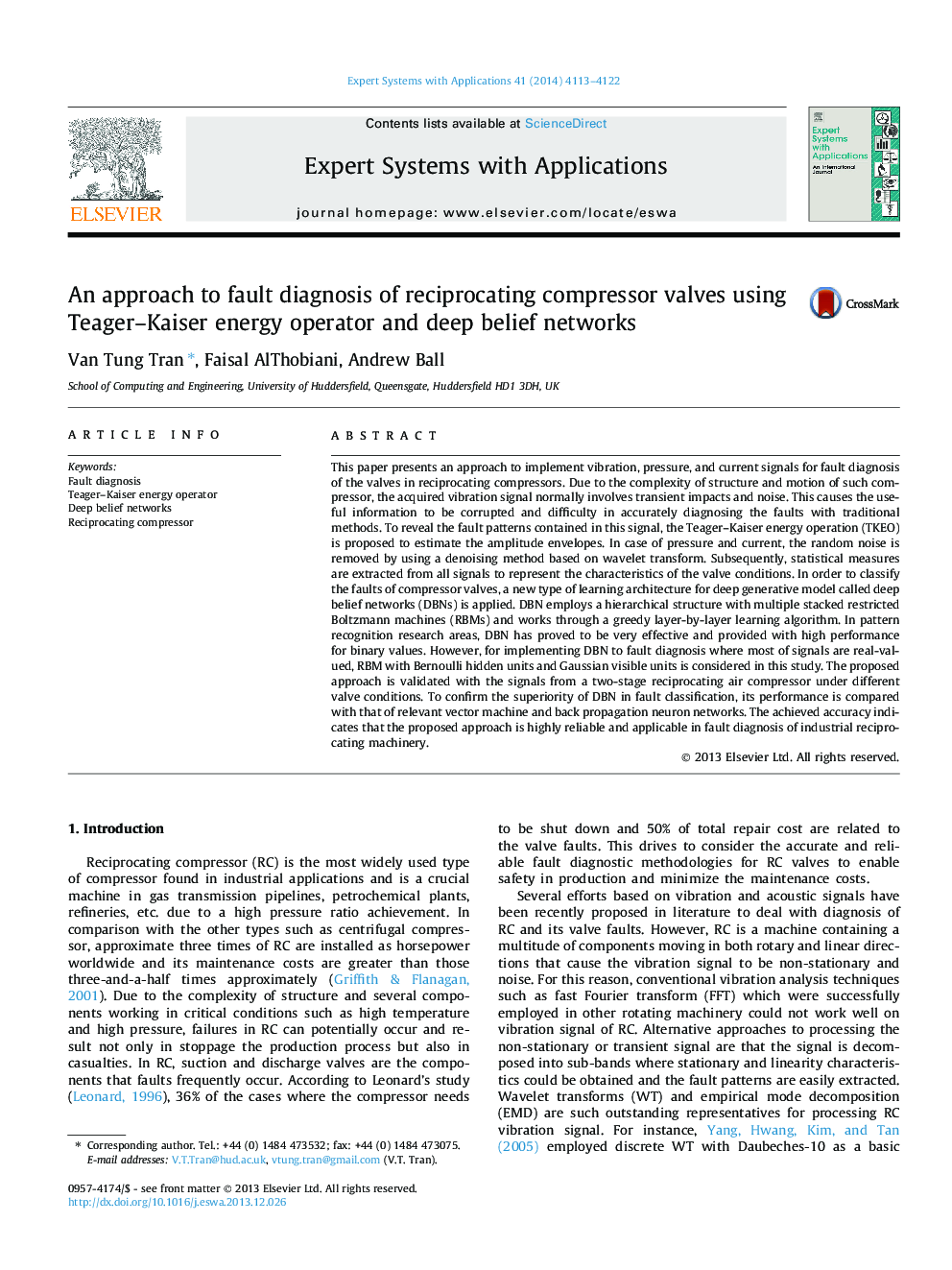| Article ID | Journal | Published Year | Pages | File Type |
|---|---|---|---|---|
| 386573 | Expert Systems with Applications | 2014 | 10 Pages |
•A new scheme for fault diagnosis of reciprocating compressor valves is proposed.•The proposed scheme is evaluated with experimental data.•A comparative study of diagnosis results is carried out.•The improvement of classification accuracy is demonstrated.
This paper presents an approach to implement vibration, pressure, and current signals for fault diagnosis of the valves in reciprocating compressors. Due to the complexity of structure and motion of such compressor, the acquired vibration signal normally involves transient impacts and noise. This causes the useful information to be corrupted and difficulty in accurately diagnosing the faults with traditional methods. To reveal the fault patterns contained in this signal, the Teager–Kaiser energy operation (TKEO) is proposed to estimate the amplitude envelopes. In case of pressure and current, the random noise is removed by using a denoising method based on wavelet transform. Subsequently, statistical measures are extracted from all signals to represent the characteristics of the valve conditions. In order to classify the faults of compressor valves, a new type of learning architecture for deep generative model called deep belief networks (DBNs) is applied. DBN employs a hierarchical structure with multiple stacked restricted Boltzmann machines (RBMs) and works through a greedy layer-by-layer learning algorithm. In pattern recognition research areas, DBN has proved to be very effective and provided with high performance for binary values. However, for implementing DBN to fault diagnosis where most of signals are real-valued, RBM with Bernoulli hidden units and Gaussian visible units is considered in this study. The proposed approach is validated with the signals from a two-stage reciprocating air compressor under different valve conditions. To confirm the superiority of DBN in fault classification, its performance is compared with that of relevant vector machine and back propagation neuron networks. The achieved accuracy indicates that the proposed approach is highly reliable and applicable in fault diagnosis of industrial reciprocating machinery.
